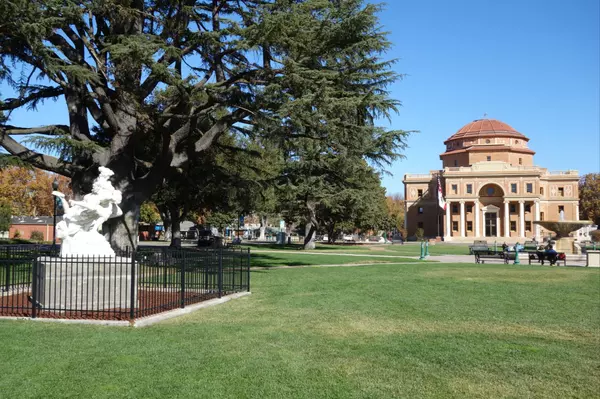The Benefits of a Rate Buydown for Buyers and Sellers in Simi Valley’s Shifting Market

The Benefits of a Rate Buydown for Buyers and Sellers in Simi Valley’s Shifting Market
The real estate market in Simi Valley, California is starting to shift from a seller’s market to a buyer’s market. Homes are taking longer to sell (about 45 days on average now, compared to just 33 days a year ago) and many are selling slightly below the asking price. Buyers have more options and negotiating power, and sellers are increasingly offering incentives to attract offers – including interest rate “buydowns.” This blog will explain what a rate buydown is, and why a seller-paid rate buydown can be a win-win for both first-time homebuyers and sellers (often more so than a simple price reduction). We’ll also highlight how working with an experienced Simi Valley real estate agent and mortgage lender can help ensure a smooth transaction, with minimal issues along the way.
What Is a Rate Buydown (and Why Consider It Now)?
In simple terms, a seller-paid interest rate buydown is when the seller contributes funds at closing to lower the buyer’s mortgage interest rate, resulting in lower monthly payments for the buyer. Instead of dropping the home’s price, the seller offers a credit (a concession) that subsidizes the loan’s interest rate for some period. Buydowns can be temporary (commonly a “2-1 buydown” that reduces the rate by 2% in year one and 1% in year two) or permanent (buying down the rate for the life of the loan by purchasing discount points). In today’s market, temporary buydowns like the 2-1 are popular, especially since mortgage rates are elevated (hovering in the 6%+ range) and many expect rates to come down in the next couple of years.
Why now? Because buyers – particularly first-time buyers – are feeling the squeeze of high interest rates and resulting high monthly payments. Sellers in Simi Valley who a year ago might have sold their home in a weekend are now finding that buyers are more hesitant or payment-conscious, and some listings sit without serious offers. Rather than cutting the asking price right away, offering a rate buydown can directly address buyers’ biggest concern: the monthly payment, without devaluing the property. As one real estate expert puts it, “by helping reduce the buyer’s loan rate – even temporarily – you make your property more attractive without lowering your asking price”. It’s a strategy tailored for a slower or transitioning market where affordability is key.
This trend isn’t just theoretical – it’s happening in practice. In fact, sellers began using rate buydowns more as interest rates climbed in 2022–2023. Buyers received a record share of seller concessions (including rate buydowns) in late 2022 as the market cooled and rates jumpedwrenews.com. Now in 2025, with Simi Valley’s inventory rising and more price reductions happening, seller-paid rate buydowns are increasingly seen as a smart incentive to bridge the affordability gap for buyers while still helping sellers achieve their goals.
Rate Buydown vs. Price Reduction: A Win-Win Strategy
How exactly is a seller credit for a rate buydown better than a price reduction? Let’s illustrate with a simplified example to compare the two approaches:
-
Price Reduction Scenario: Suppose a home is listed at $550,000. In a softer market, the seller might consider a 3% price drop (about $16,500 off) to entice a buyer. If the buyer puts 5% down, this reduction lowers the loan amount and saves the buyer roughly $123 on their monthly mortgage payment. However, it directly costs the seller $16,500 in lost proceeds (and reduces the overall sale price/value of the home).
-
Rate Buydown Scenario: Instead, the seller could keep the list price at $550,000 and offer a seller credit (concession) of, say, ~$12,000 to fund a 2-1 interest rate buydown for the buyer. With that credit, the buyer’s interest rate might drop by 2% in year 1 and 1% in year 2, which translates to major savings: in this scenario, about $682 lower on the monthly payment in the first year (over 5× the monthly savings compared to the price cut!). The total cost to the seller for this buydown is roughly $12,384 – notably less than the $16,500 price reduction would have cost. In fact, the seller nets about $4,116 more by using the buydown strategy versus a price reduction.
As these examples show, a seller-paid rate buydown can save the buyer significantly more money on their monthly payments than a typical price reduction would, while costing the seller less in proceedswrenews.com. It’s essentially leveraging a smaller amount of money for a larger effect. One analysis calls this “a much more effective [strategy] at saving both parties money than a simple price reduction” – the buyer enjoys a much lower payment, and the seller maximizes their profit by keeping the sale price high. In other words, both sides win. The seller avoids a large price cut (and can keep neighborhood comps high), and the buyer gets relief where it counts: in the monthly budget.
To put it another way, “instead of selling their home for a lower price, [the seller] may only end up spending a portion of what they would’ve lost on the lowered sale price” by using those funds for a rate buydowninsights.clutchaz.com. And for the buyer, the reduced rate can make the difference in affording the home comfortably. Next, we’ll break down the specific benefits this strategy offers to buyers and sellers in today’s Simi Valley market.
Benefits of a Rate Buydown for Homebuyers
For first-time buyers or anyone stretching their budget to buy in Simi Valley, a seller-paid rate buydown can offer several key advantages:
-
Lower Monthly Payments (Greater Affordability): The most obvious benefit is a significantly lower monthly mortgage payment, at least for the first couple of years. By reducing your interest rate (for example, by 2% in year one and 1% in year two with a 2-1 buydown), you might save hundreds of dollars per month. This provides immediate relief during the early years of homeownership when budgets are often tight. As one real estate guide notes, a buydown “gives [buyers] a mortgage payment they can afford when they need it most,” rather than struggling with the full rate from day one. This can be especially helpful for first-time buyers adjusting to new expenses (maintenance, insurance, etc.).
-
Easier to Qualify and Move in Sooner: Lower payments can make it easier for some buyers to qualify for the loan and move forward now instead of waiting. Many buyers have been sitting on the sidelines hoping for either prices or rates to drop. A rate buydown is a creative solution to achieve a “lower rate” now, courtesy of the seller. Instead of delaying your homeownership dream (and risking home prices rising further or the perfect home getting sold), a buydown helps bridge the affordability gap immediately. It effectively mimics the benefit of a rate drop in the near-term. In fact, local experts point out that in today’s high-rate environment, tactics like buydowns can motivate buyers who “were waiting for rates to come down” to purchase now, since their early payments become manageable.
-
Flexibility if Rates Improve or Income Grows: A temporary buydown is most useful if you expect your financial situation to improve soon – and it provides that flexibility. For example, if you anticipate a raise or new job in a year or two, the buydown gives you breathing room on payments until then. Likewise, if interest rates fall in the next couple of years, you have the option to refinance the mortgage at a lower permanent rate. In the best case, you might never have to pay the original higher rate for longinsights.clutchaz.com. (Bonus: if you refinance before all the buydown funds are used, many loans will allow the unused portion to be applied to your refinance costs, essentially rolling that benefit forward.) This means the seller’s concession can keep on giving, helping you transition to an even better loan when possible.
-
No Out-of-Pocket Cost for the Buyer: Unlike a buyer-initiated rate buydown (where you would pay points upfront at closing), a seller-paid buydown costs you nothing upfront. The seller’s credit covers the cost of the interest-rate subsidy. You get the advantage of lower rates without having to deplete your savings for discount points. Essentially, the seller is prepaying a chunk of your interest so you don’t have to. For a first-time buyer who may be tight on cash after down payment and closing costs, this is a valuable break.
-
Greater Choice of Homes: By improving affordability, rate buydowns can widen the range of homes you can comfortably consider. In a pricey market like Simi Valley, getting a lower effective rate might mean the difference between settling for a smaller condo versus being able to afford that single-family home you really want. Sellers offering a buydown incentive may make their property stand out to you. And in a shifting market, you as a buyer can also propose a rate buydown credit in negotiations. Your agent can help identify sellers who might be open to this. It never hurts to ask – the worst they can say is no, but given current trends, many sellers understand this strategy and are willing to make a deal that works for both parties.
In short, a seller-paid rate buydown can make homeownership attainable and comfortable for buyers who are pressed by high interest rates. It addresses the monthly payment, which is often the number one concern for first-time buyers, more effectively than a price cut would. And importantly, it does so without you having to front the money. It’s a powerful tool in a buyer’s market toolkit.
Benefits of a Rate Buydown for Sellers
Sellers in Simi Valley’s market are finding that strategic incentives can mean the difference between a quick, successful sale or watching a listing languish. Here are the benefits of offering an interest rate buydown credit from the seller’s perspective:
-
Attract More Buyers in a High-Rate Environment: When rates are high, many buyers get scared off by the steep monthly payments. By advertising that you’re willing to buy down the buyer’s rate, you instantly make your property more appealing. It’s a way of saying, “I’ll help make this home affordable for you.” Well-qualified buyers who are payment-sensitive might choose your home over another similar one because your concession helps them out. In a market with growing inventory, this sets your listing apart. Remember, more interested buyers can mean better offers and a faster sale.
-
Sell Faster and Reduce the Chance of Further Price Cuts: Offering a buydown can help you avoid extended time on market and additional markdowns. Instead of waiting and doing a painful price drop later, the rate buydown preemptively sweetens the deal. This can lead to a sale closer to your preferred timeline. As industry data shows, sellers are increasingly needing to drop prices to draw buyers in slower markets – but those who use concessions smartly might not have to resort to multiple price cuts. You’re effectively negotiating in a way that both retains your price and meets buyers’ needs, which often expedites finding common ground. It’s a proactive tactic for a smoother transaction.
-
Minimize Price Reductions – Keep Higher Net Proceeds: Perhaps the biggest seller benefit is financial. With a rate buydown, you can close the deal without slashing your sale price, which means you keep more money from the sale. You might spend a few thousand dollars on a concession at closing, but this is often far less than the price reduction a buyer would have demanded otherwise. For example, as we saw, a seller who would have had to cut $20,000 off the price was able to achieve the sale by giving about $8,500 in a rate buydown credit – pocketing $11,500 more than they would have with a price drop. In general, “a seller-paid rate buydown can be cheaper for the seller than reducing the home’s price”wrenews.com. You also protect your home’s appraised value by maintaining the higher contract price (important for you and even your neighbors’ property values). The bottom line: you retain more of your equity.
-
Win-Win Negotiation (Happier Buyer, Happier Seller): Sellers who offer a buydown often find the negotiations turn more positive. Instead of haggling purely over price, you’re offering a solution that directly benefits the buyer. It creates goodwill and a sense of partnership in solving the affordability issue. The buyer feels you’re helping them (which you are), so they may be more agreeable on other terms. Meanwhile, you’re ultimately getting the terms you need as well (a acceptable price). Deals structured this way can lead to smoother escrows because both sides feel they’ve achieved a win. In fact, many top agents note that a seller-paid buydown strategy is often “the smartest move” to get a deal done in a shifting market – the buyer enjoys a lower payment and the seller “gets to maximize their profit by keeping the home at list price”.
-
Maintain Market Momentum and Comps: Selling at or near your asking price with the help of a buydown means the comparables in your area stay strong. This can be a consideration if you’re in a neighborhood where a big price drop could affect appraisals or other upcoming sales. By keeping the recorded sale price higher (and just adjusting via a seller concession), you contribute to stabilizing home values in Simi Valley. As a bonus, your neighbors (and future sellers in the area) will thank you, since “homes selling for top dollar is great for everyone in the neighborhood”.
In summary, offering a rate buydown credit is a savvy strategy for sellers facing the current market reality. It allows you to work with buyers’ needs without undermining your own financial outcome. You essentially “invest” a little in the buyer’s loan to secure your sale at a better price. Given that Simi Valley’s market is becoming more buyer-friendly, being open to concessions like this can be the key to achieving your sale while others sit on the market. It’s truly a case of short-term give for long-term gain.
Working with the Right Agent and Lender is Key
Whether you’re a buyer or a seller, navigating a rate buydown arrangement requires coordination and expertise. This is where your real estate agent and mortgage lender become invaluable partners. By working with knowledgeable professionals, both parties can ensure the transaction goes smoothly with the least amount of issues arising.
Real Estate Agent’s Role: An experienced local agent in Simi Valley will help negotiate and structure the offer to include a rate buydown in a way that benefits you. If you’re the seller, your agent can advise whether a buydown incentive makes sense for your listing and how much to offer. They’ll know how to market it (“Seller will credit X amount to buy down your rate!”) to draw in buyers. If you’re a buyer, a good agent can identify which listings or sellers might be receptive to a buydown concession and help you craft a compelling offer requesting one. Importantly, agents ensure that the contract is written correctly – specifying the seller credit for interest rate buydown – so that there’s no confusion in escrow. They also keep an eye on related details, like appraisal and loan approval, to avoid hiccups. In a dynamic market, having a savvy agent is crucial; as one industry veteran puts it, “this market requires strategy, not guesswork… work with a real estate pro who knows how to navigate the shifting conditions in our local market.” The right agent will anticipate potential issues and tackle them before they become problems, whether it’s negotiating repairs after an inspection or extending timelines if needed. In short, they are your advocate and problem-solver, ensuring both buyer and seller reach the finish line with as little stress as possible.
Lender’s Role: The mortgage lender is equally important, because they handle the technical side of the buydown. A competent lender will calculate different buydown scenarios to show how much a certain seller credit will lower the interest rate and the monthly payment. They’ll inform the buyer (and seller) of exactly how much relief the buydown provides and for how long, so everyone has clear expectations. Lenders also ensure that the plan complies with loan program rules – for instance, different loans have limits on seller concessions (e.g. FHA loans allow up to 6% of the loan amount, VA up to 4%, and conventional loans have their own caps based on down payment). Your lender will make sure the agreed credit doesn’t exceed those limits and is applied correctly. During the transaction, the lender works with the escrow/title company to set up the escrow account for a temporary buydown (if it’s a 2-1 buydown, the funds are held and applied to subsidize the buyer’s payments each month). They’ll also underwrite the loan properly – typically qualifying the buyer at the full rate to be safe – so that the buyer isn’t getting in over their head. Essentially, a good lender dot the i’s and cross the t’s so that the buydown is executed seamlessly at closing. They can also be a resource if the buyer wants to refinance later, possibly using any unused buydown funds (as mentioned earlier).
Together, your agent-lender team will coordinate to troubleshoot any issues. For example, if an appraisal comes in low, they might rearrange the deal (perhaps adjusting the credit vs price balance) to keep it together. If there are questions from the underwriter about the buydown, the lender and agent will handle the documentation. Their goal is aligned with yours: get the sale closed while keeping both parties satisfied. By leaning on professionals, you’re far more likely to have a smooth experience even with creative elements like seller credits.
Educational guidance: Additionally, a good agent will take the time to educate first-time buyers about how programs like buydowns work (much like this blog is doing) so you can make informed decisions. And a good lender will present options in plain language, helping you compare a buydown versus other tactics (such as a standard price reduction or different loan types). You should feel free to ask them questions – for instance, “How much would a 1% lower rate save me per month, and what would the seller credit need to be to get that?” – they can crunch those numbers. This advice and analysis are part of the service when you work with seasoned professionals.
Finally, local expertise matters. Simi Valley, like every region, has its own market nuances. A local agent will know, for example, if “rate buydown credits” are becoming common in our area, what the typical concession sizes are, and how to leverage city-specific programs or norms. (As a side note, Simi Valley even offers some homebuyer assistance programs for down payments, etc., which a local pro can inform first-timers about if relevant.) Likewise, local lenders understand California transactions and any state-specific regulations. By choosing an agent and lender who are experienced and communicative, you’re effectively arming yourself with a team that will prevent problems before they arise and handle the inevitable surprises of a real estate deal with ease. This ensures both buyer and seller have the least amount of issues during the transaction, even when employing creative financing strategies.
Conclusion
The Simi Valley market is evolving, and both buyers and sellers need to adapt. Seller-paid rate buydowns are a prime example of a creative solution that fits the current climate: buyers get relief from high interest rates, and sellers can entice offers without sacrificing their hard-earned equity. In a shifting market moving toward buyers, understanding tools like buydowns can give first-time homebuyers a much-needed break and sellers a competitive edge.
Rather than viewing the negotiation as adversarial, think of it as crafting a win-win deal. A rate buydown credit is essentially a form of compromise where each side gains something valuable – affordable payments for the buyer, a solid sale price for the seller. When compared to blunt price cuts, it’s often a more efficient and mutually beneficial approachwrenews.com.
If you’re a buyer, don’t be afraid to discuss the possibility of a rate buydown with your agent and lender; it could be the key to unlocking homeownership for you right now. And if you’re a seller, consider that offering a concession on the interest rate might ultimately net you more and sell your home faster than a price drop would.
Most importantly, remember that you don’t have to figure this out alone. Surround yourself with a great real estate agent and mortgage lender who understand these concepts and have experience in the Simi Valley area. As the market transitions, professional guidance is invaluable – “focus on your personal situation and work with a pro who knows how to navigate the shifting conditions in our local market,” advises one long-time broker. With the right team by your side, you can confidently handle negotiations and any issues that arise, turning potential problems into straightforward solutions.
The bottom line: a rate buydown can be a powerful tool in today’s real estate landscape, benefitting both buyers and sellers. It’s an educational opportunity for first-timers to learn how financing can be tailored to their advantage, and a strategic option for sellers to make their deal happen. In Simi Valley’s transitioning market, strategies like these – backed by solid professional support – will help ensure transactions are smoother and more successful for everyone involved. Here’s to smart buying and selling, even in a challenging market!
Sources:
-
Neohomeloans – “Interest Rate Buydown vs. Price Reduction: Which Option Is Better?” (2023) – Comparison of monthly savings for buyer and cost to seller in price cut vs 2-1 buydown scenarios.
-
HomeLight – “A Seller’s Guide to Buying Down the Interest Rate for Buyers” (Mar 26, 2025) – Explanation of seller-paid buydowns and example showing seller kept $11.5k more by offering a 2-1 buydown instead of a $20k price reduction.
-
Weekly Real Estate News (USNews) – “A Guide to Seller-Paid Mortgage-Rate Buydowns” (Jan 22, 2023) – Notes that a seller-paid buydown typically saves buyers more on monthly payments than a lower price would, and often costs sellers less than a price cutwrenews.com. Also mentions record-high seller concessions in Q4 2022wrenews.com.
-
Redfin – Simi Valley Housing Market Trends (June 2025) – Local market data showing median sale price down 0.65% YoY and days on market up to ~45 days, with homes selling ~1% below list on average.
-
Avant One Real Estate Blog – “Spring 2025: More Homes on the Market = Buyer’s Opportunity” – Indicates inventory is up and price reductions are more common now, giving buyers more leverage.
-
Clutch (Real Estate Insights) – “What is a 2-1 Buydown and How Does it Make Homeownership More Affordable?” (Aug 8, 2022) – Describes benefits of 2-1 buydown for buyers (temporarily lower rate, option to refi) and notes sellers only spend a fraction of what a price cut would cost by using a buydowninsights.clutchaz.com.
-
Avant One Real Estate Blog – “2025 Housing Market Forecast… Conejo Valley” – Advises working with a professional to navigate a changing market, as headlines can mislead; emphasizes strategy and expert guidance for buyers and sellers.
Categories
Recent Posts








Team Leader/ Realtor® | License ID: 01969368
+1(310) 927-9300 | michael.sanneh@exprealty.com

